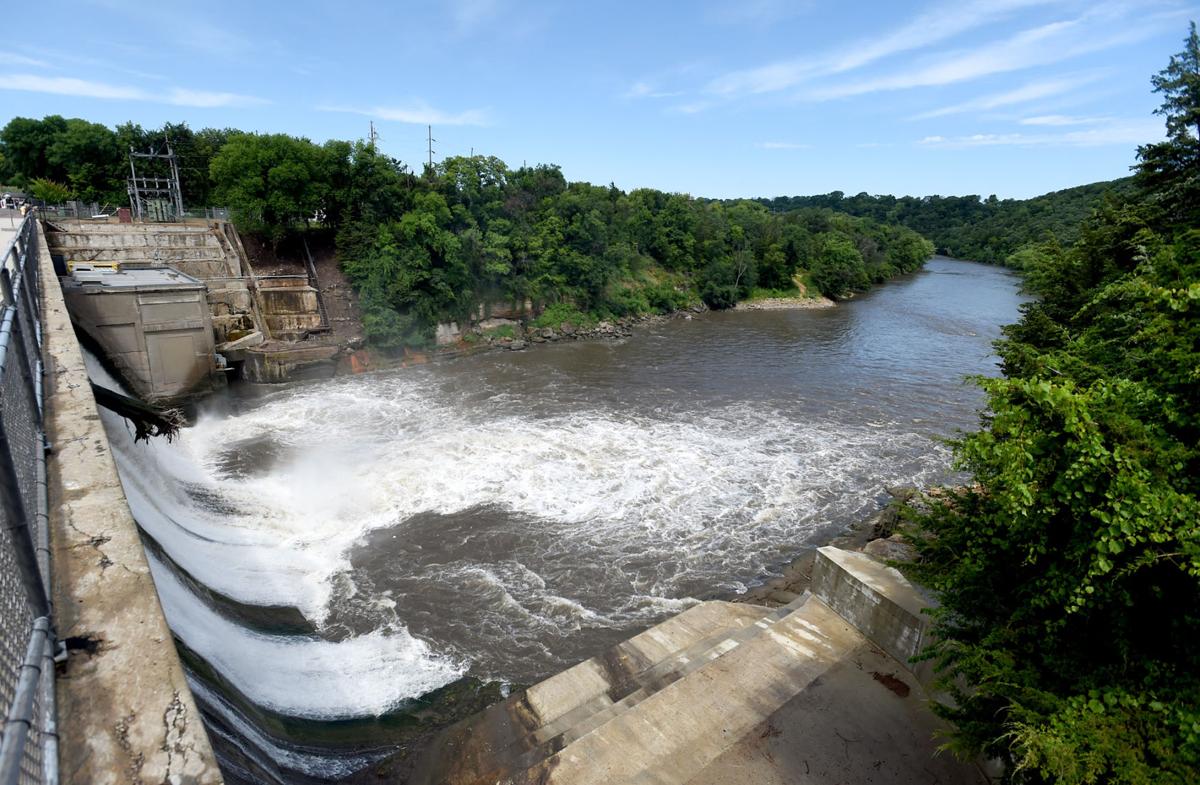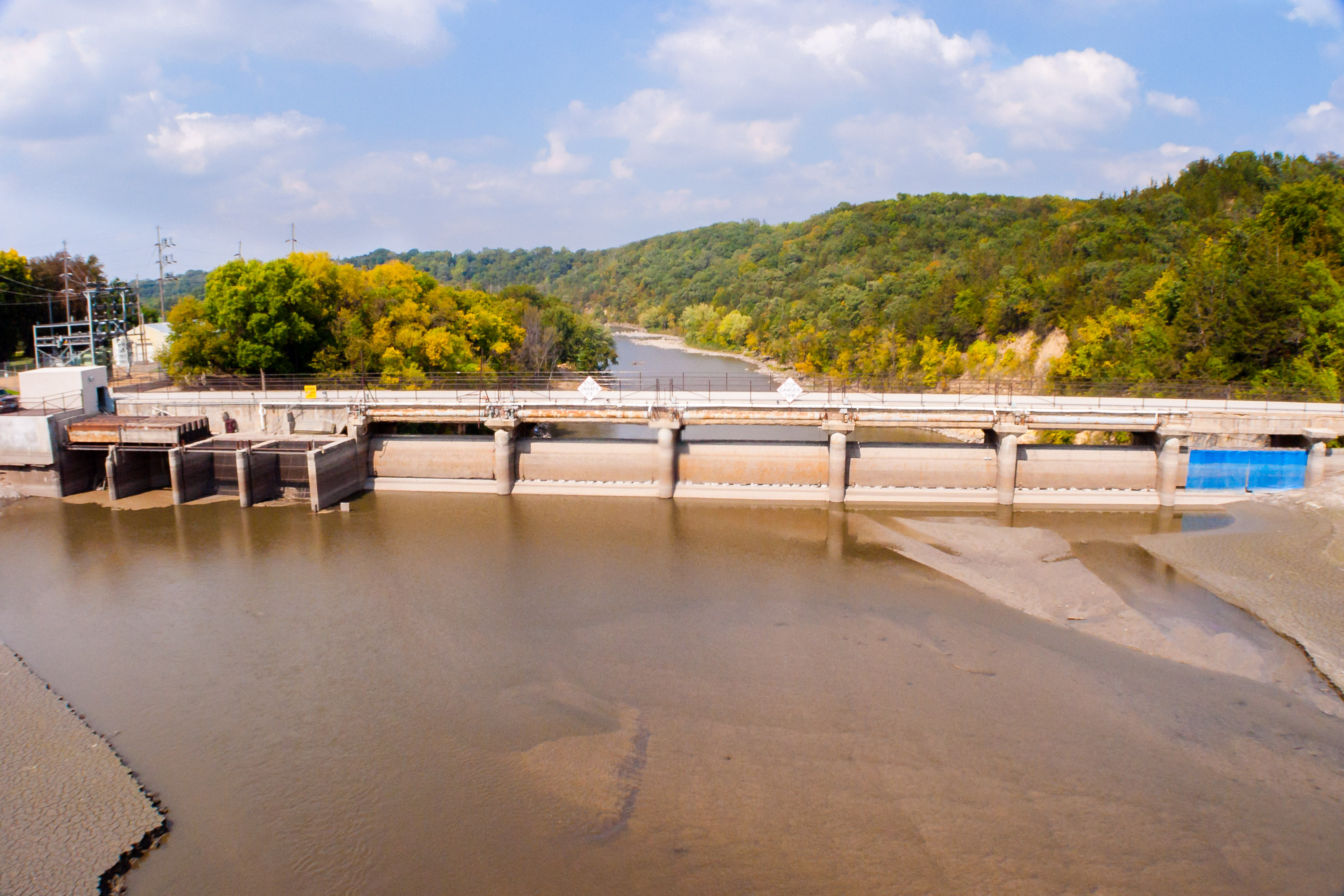Dam Structure and Design: Rapidan Dam Break

Rapidan dam break – The Rapidan Dam, an earth-fill embankment dam, was constructed in 1902 across the Rapidan River in Virginia. It was designed to provide water storage for the city of Richmond, with a height of 85 feet and a length of 1,100 feet.
The dam’s design incorporated several engineering principles to ensure its stability and functionality. The embankment was composed of compacted earth and rock, providing a sturdy and impermeable barrier against water flow. The dam’s cross-section featured a trapezoidal shape, with a wider base than crest, enhancing its resistance to overturning forces.
Materials and Construction, Rapidan dam break
- Earth and Rock Embankment: The dam’s primary structural component was a massive embankment constructed from compacted earth and rock materials.
- Concrete Core Wall: A central core wall made of reinforced concrete was incorporated into the embankment to minimize seepage and provide additional structural support.
- Spillway and Outlet Works: The dam featured a spillway and outlet works to control water flow and prevent overtopping. The spillway consisted of a concrete chute that discharged excess water into the river downstream, while the outlet works allowed for controlled water release.
Structural Weaknesses
- Foundation Settlement: The dam’s foundation on soft and compressible soil led to uneven settlement over time, weakening the structure.
- Insufficient Compaction: Inadequate compaction of the embankment materials resulted in voids and weak zones, compromising the dam’s integrity.
- Overtopping: During heavy rainfall events, the dam’s spillway capacity proved insufficient, leading to overtopping and erosion of the embankment.
- Internal Erosion: Seepage through the embankment and core wall created internal erosion channels, further weakening the structure.
Environmental Impact
The catastrophic failure of the Rapidan Dam unleashed a torrent of water that wrought immediate and long-term consequences on the surrounding environment. The sudden release of billions of gallons of water drastically altered the local ecosystem, affecting aquatic life, vegetation, and wildlife.
Impact on Aquatic Life
The surge of water washed away aquatic organisms, including fish, invertebrates, and amphibians. The loss of habitat and food sources decimated populations, disrupting the delicate balance of the ecosystem. The force of the water also scoured riverbeds, destroying spawning grounds and shelters for aquatic life.
Impact on Vegetation
The floodwaters inundated vegetation along the riverbanks, drowning trees and other plants. The loss of vegetation reduced biodiversity, disrupted nutrient cycling, and increased erosion. The lack of vegetation also diminished shade, leading to increased water temperatures and further stress on aquatic life.
Impact on Wildlife
The sudden change in water levels and habitat availability had a severe impact on wildlife. Many animals lost their nesting sites, food sources, and shelter. The increased turbidity of the water impaired visibility for predators, affecting their hunting ability. The loss of vegetation reduced cover for prey species, making them more vulnerable to predators.
Water Quality and Contamination
The floodwaters carried sediment, pollutants, and debris downstream. The high sediment load increased turbidity, reducing light penetration and affecting photosynthesis in aquatic plants. The release of pollutants, such as agricultural runoff and sewage, posed a risk to human health and the environment. The disruption of water treatment facilities further exacerbated water quality issues, potentially leading to disease outbreaks and other health concerns.
Historical Significance and Lessons Learned

The Rapidan Dam break, a pivotal event in dam engineering history, unfolded on September 18, 1972, in Madison County, Virginia. A torrential downpour unleashed by Hurricane Agnes relentlessly pounded the dam, causing its earthen embankment to give way catastrophically.
In the aftermath, the dam’s failure sent a wall of water surging through the countryside, claiming 35 lives and leaving a trail of destruction. The disaster sparked a thorough investigation, revealing a series of design and maintenance deficiencies that contributed to the collapse.
Timeline of Events
- September 18, 1972: Hurricane Agnes makes landfall, bringing torrential rains to Virginia.
- Evening: The Rapidan Dam begins to show signs of distress, with water seeping through its embankment.
- 10:45 PM: The dam collapses, releasing a massive flood of water.
- September 19: The floodwaters reach their peak, causing widespread damage and loss of life.
Response from Authorities
The disaster prompted an immediate response from authorities. Emergency crews rushed to the scene to rescue survivors and provide aid to the affected communities. The Army Corps of Engineers was tasked with assessing the damage and developing a plan for reconstruction.
Lessons Learned
The Rapidan Dam break served as a sobering reminder of the importance of dam safety. The investigation into the disaster revealed several crucial lessons that have since shaped dam design and maintenance practices:
- The importance of thorough site investigations and geotechnical analyses to identify potential geological hazards.
- The need for rigorous design standards and construction practices to ensure the structural integrity of dams.
- The critical role of regular inspections and maintenance to detect and address potential problems before they escalate into failures.
Importance of Regular Dam Inspections and Maintenance
Regular dam inspections and maintenance are essential to prevent future failures. Inspections allow engineers to identify potential problems, such as seepage, cracks, or erosion, and take corrective action before they become serious. Maintenance activities, such as repairing leaks, strengthening embankments, and upgrading equipment, help to ensure the continued safe operation of dams.